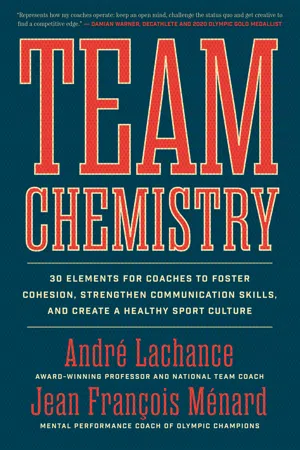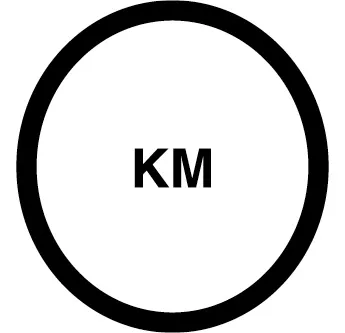If you have ever travelled to the large cities of Europe or other continents, perhaps you have noticed a small monument named “Kilometre Zero.” This marker indicates the original point of a city, signifying the foundational stages of its establishment. At the time, Kilometre Zero served as the meeting point for people wanting to get together. The location also marked the starting point of all routes; hence the adage, “All roads lead to Rome.” Thanks to the colonization of some areas in Latin America, you will find the same landmark in certain countries there. In Cuba, Kilometre Zero is located right near the El Capitolio building in Havana, next to a great café. Having studied in Havana at the Manuel Fajardo Sports Institute, I became familiar with this landmark.
Every team that has experienced success can look to its own Kilometre Zero. Usually, it is the anchor point from which a team culture will grow. This foundation will introduce the values and principles that, if properly demonstrated, will mould members of a group together. These standards must remain absolute and non-negotiable. They will help a team when it veers off course, falls into a slump or looks to resolve any in-house conflicts.
At their core, certain teams may feature such tenets as:
- effective communication
- respectful behaviour
- tireless work ethic
- excellence mindset
- courage and resilience
Some teams, like Liverpool FC, will even develop a manifesto, identifying in detail the principles that will guide their club operations. The key points of Liverpool’s manifesto are the following:
- “You will never walk alone.” There is a bond or kinship that all team members can rely on when the going gets tough.
- “We hold our heads high through the wind and the rain.” Team members must never give up, no matter the circumstances or obstacles that may stand in their way.
- “We always give back.” The team will be a presence in the community to help and support those in need.
Team culture grows from different roots and in many ways. Some clubs will be more expressive when showing their identity, while others may be more reserved. In all cases, a team’s culture and the rules that come with it will form the group’s DNA. This DNA can become the key to a team’s success when the members of a team adhere to it without compromise.
When thinking of groups expressing their identity in a loud, exciting fashion, the New Zealand rugby team has to top the list. Even if you are not a fan of the sport, surely you have seen highlights of the national team’s warm-up ritual. The haka is a ceremonial Maori dance performed by the players at mid-field, directly in front of their opponents. The tribal challenge consists of vigorous movements using the legs and arms, accompanied by loud chanting and intimidating looks. The haka has been a custom the New Zealand men’s national rugby teams since 1905 and represents the perfect pre-game motivation for their warrior players. For the All Blacks, the haka is an opportunity to come together, connected in full harmony in preparation for a big game. It is a reminder that anything is possible when working as a unit. The haka is their Kilometre Zero. Everything else flows from that when playing a match.
Both JF and I have had the chance to visit Japan on a few occasions. Japanese culture is widely recognized for its respectful and polite nature. In Tokyo, for instance, you can leave your cell phone on a subway and, even after a long period of time, chances are you will find it in the exact spot you left it.
The courtesy displayed by Japanese people extends to the world of sports competition, to the envy of many coaches. For example, during the 2018 FIFA World Cup in Russia, the Japanese team was eliminated from the tournament with a devastating loss against Belgium, yet the defeated players still took the time to clean their dressing room. Soccer fans will remember the heartbreak of that match, one in which Japan held a two-goal advantage, only to fall 3–2. Nevertheless, the Japanese team members prepared a note, written in Russian, addressed to the tournament organizing committee and the people of Russia, thanking them for their gracious welcome during the competition. Respect being at the heart of their culture, this gesture was normal for the Japanese players and staff, even if perhaps considered extraordinary for many of us. To the Japanese, such principles take on far greater importance than the frustration and agony of defeat. Their Kilometre Zero even helps to soothe the sting when dealing with anguish.
A team’s culture also affects the methods of scouting and selecting members of the team. Many sports leaders will choose their athletes partially based on how they identify with the club’s culture. This was the case for France, soccer’s world champion at the 2018 FIFA World Cup. During a conversation with one of the leaders of the national sport governing body, I quickly came to understand how French soccer scouts did not just observe technical skills and abilities when conducting roster recruitment. More precisely, officials also took into consideration such things as players’ reactions to a bad coaching decision or a mistake by a teammate. If a player reacted poorly, their chances of making the team were reduced. This is an excellent reminder of how important applying team principles really is.
When formulating a team’s DNA, coaches need to ask the following questions:
- What behaviour, practices and attitudes do I consider non-negotiable for our team?
- What will be the standards I set to establish our team’s foundation and objective?
Below are some fundamental points to ponder to help you answer these questions.
Devise Your DNA with Your Team
It is very common for coaches and sports managers to create and impose their own culture instead of including group members when identifying performance and behavioural expectations. We do not suggest this. A culture formed by a group will have a better chance of thriving than one forced upon others by an individual.
To know
where to go,
you must first
know
where you are.
Start with the Non-Negotiables
It will be easier to obtain consensus from the beginning, which will provide momentum for developing any standards that follow. Feel free to use different language for these criteria, such as “absolutes” or “must-haves.” “Show respect towards team personnel” is a good example of one of these rules. At no time should athletes demonstrate aggression or disrespect towards team coaches, staff or teammates, no matter what their decisions may be. Self-control among athletes must always be displayed.
Make It Relevant
A culture should be shared, easy to understand and relatable. Create some visuals that provide reminders of the most important points. For our Canadian women’s national baseball team, I developed (in collaboration with assistant coaches) 20 team standards. Here are some examples:
- Every practice is a good practice.
- Never let conflicts grow or linger.
- Always look someone in the eye when speaking with them.
- Be on time.
- Remember, we can face any situation or obstacle.
Bear in mind that during international competitions, athletes will need emphasis placed only on a handful of key expectations more fitting for that given moment. Coaches should choose what to emphasize based on the team’s mindset and spirit at that specific time. These reminders can also trace back to meetings with athletes. Some coaches will even use these reminders during conflicts among team members.
Keep up with the Times
Standards relating to team culture should be revisited regularly. Doing a check-in can help determine if anything should be tweaked, strengthened or removed based on the current roster and climate. Team members may leave while new ones arrive, so coaches should be prepared to modify the formula for a team’s DNA.
Celebrate when the Culture Wins
Moments will occur when you realize culture played a strong role in a team having success. Be sure to use these times to further cement the value and importance of the culture as a pathway to that success. Highlight the displays that reinforce your Kilometre Zero. Celebrate your unique identity.
In recent years, we have had the opportunity to work with several large corporate enterprises. The culture developed within one of those Canadian corporations has made it one of the best in sales in the country. Not only that, but this company is also recognized as one of the top employers in North America on a regular basis. Looking at their DNA, we observe “curiosity,” “inspiration” and “integrity” as the core of their decision-making and corporate objectives. These three elements combine individual and organizational performance so well — along with allowing for a perfect work–life balance — to reveal the company’s Kilometre Zero. It is no surprise this company sits among the head of its class.
JF founded Kambio Performance Inc. with a very simple Kilometre Zero: “Surround yourself with good people.” Everything stems from that. His consultants, partners, support staff and even clients are carefully chosen, based on Kilometre Zero. At the base, they are all qualified, but the quality of being a good person and having strong character will always count the most. This element of his company’s DNA is non-negotiable. JF believes firmly that with good people, it is easy to deliver a good product. To date, this principle is entrenched and Kambio Performance continues to flourish year after year.
Time for reflection:
- What are your non-negotiables as the leader of your team?
- What are you not willing to compromise?
- What is your one principle that is the core of the team?
- Does your team have its own activity or thing that brings everyone together, like the haka?
We encourage you and your team to identify the fundamental values that will define your DNA. Kilometre Zero may not lead to Rome, but it will definitely lead to success in sports.


